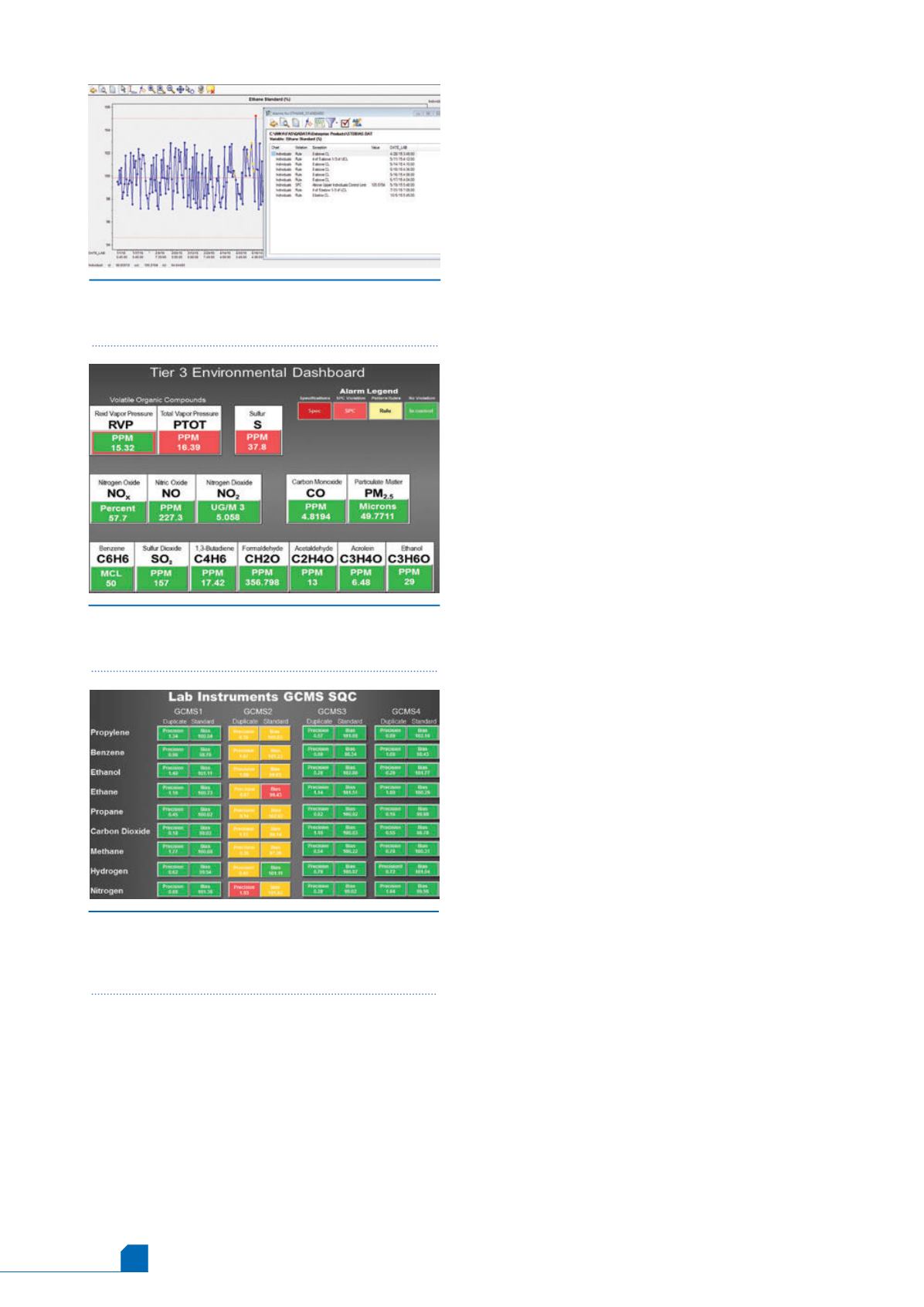
June
2016
HYDROCARBON
ENGINEERING
40
40CFR80.47 defines a ‘Performance-based Analytical Test
Method Approach’ detailing specific QA/QC requirements for
each method as follows:
n
n
SQC and other statistical techniques referencing multiple
American Society for Testing and Materials (ASTM) standards,
such as ASTM 6299, covering both voluntary consensus-based
standards body (VCSB) and non-VCSB methods.
n
n
A VCSB is a domestic or international organisation that plans,
develops, establishes, or coordinates voluntary consensus
standards using agreed-upon procedures, and which
possesses the attributes of openness, balance of interest, due
process and consensus.
4
Performance-based testing stipulates that any test method
may be used as long as it meets certain performance criteria, bias
assessment criteria and other documentation. A precision and
accuracy qualification must be demonstrated for the following
product certification parameters:
n
n
Sulfur in gasoline (i.e. ASTM D7039, ASTM D3120, ASTM D5453
and ASTM D6920, ASTM D2622-10 is exempt).
n
n
Sulfur in butane (ASTM D4468 or ASTM D3246 – this is
applicable to refineries that produce gasoline by blending
butane with previously certified gasoline [PCG],
ASTM D6667-10 is exempt).
n
n
Olefins in gasoline (ASTM D6550, ASTM D1319-13 is exempt).
n
n
Aromatics in gasoline (ASTM D1319, ASTM D5769-10 is
exempt).
n
n
Oxygen/oxygenates in gasoline (ASTM D4815, D5599-00 is
exempt).
n
n
RVP of gasoline (ASTM D5191, D5191-13, using the EPA equation
is exempt).
n
n
Distillation of gasoline (D86-12 is exempt).
n
n
Benzene in gasoline (D3606-10 is exempt).
n
n
Aromatics in diesel (1319-13 is exempt).
For the designated test methods listed above, exemptions
apply only if the method version has been in use by the lab prior
to 28 October 2013.
Performance validation requirements
Method validation is required to determine the reliability of
analytical data so that equipment, methodology and users are
confirmed to be operating correctly with proper calibration.
The test method qualification pass/fail criteria for accuracy
and precision are stipulated in great detail in Tier III regulations.
Absolute fuel parameter test methods require both accuracy and
precision while method defined fuel parameter test methods
require only precision.
Methods that are not exempt must be correlated to the
primary methods using a correlation equation, either provided by
a VCSB, such as ASTM, or as determined by performing an
ASTMD6708 evaluation at the test facility. The correlated results
can then be used to determine if the accuracy of the testing is
acceptable under Tier III requirements.
An example of an absolute fuel parameter: sulfur
Sulfur is defined as an absolute fuel parameter; a parameter for
which the construction of a gravimetric standard is practical.
n
n
Determining accuracy:
§
§
Average results of 10 samples of a 1 - 10 ppm gravimetric
standard <0.70 ppm.
§
§
Average results of 10 samples of a 10 - 20 ppm gravimetric
standard <1.02 ppm.
Figure 4.
PBATMA methods require monitoring
for both SPC and pattern rule violations as in this
example.
Figure 5.
A Tier III – PBATMA compliant real time
dashboard constantly monitors emissions for critical
environmental compounds.
Figure 6.
Advanced systems can automatically alarm
lab technicians and managers when instruments are
statistically trending out of control so actions can be
quickly taken before product quality suffers.
must be stored for five years. Historical data, as seen in Figure 1,
is integral to compliance.
Tier III: the call for atypical details for
statistical QC
While using statistical quality control (SQC) for test methods is
commonplace to ensure data quality in the laboratory, the EPA
stipulates specific details which are unique. Determining
accuracy and precision in the statistical performance of each
parameter is now required. Figure 2 demonstrates how control
limits are monitored properly by statistical software.


